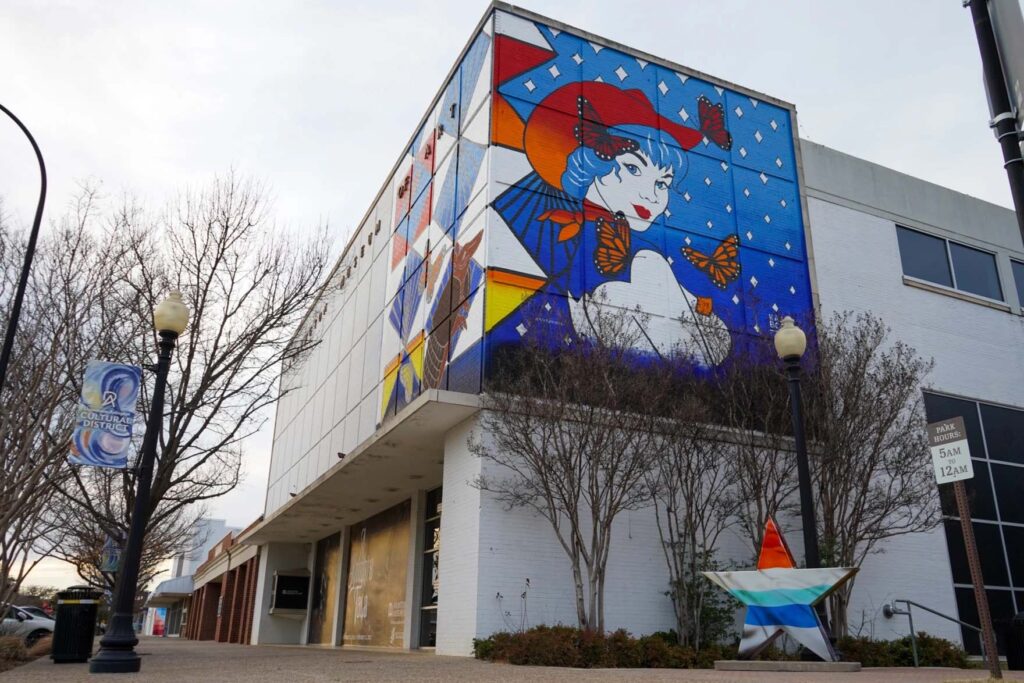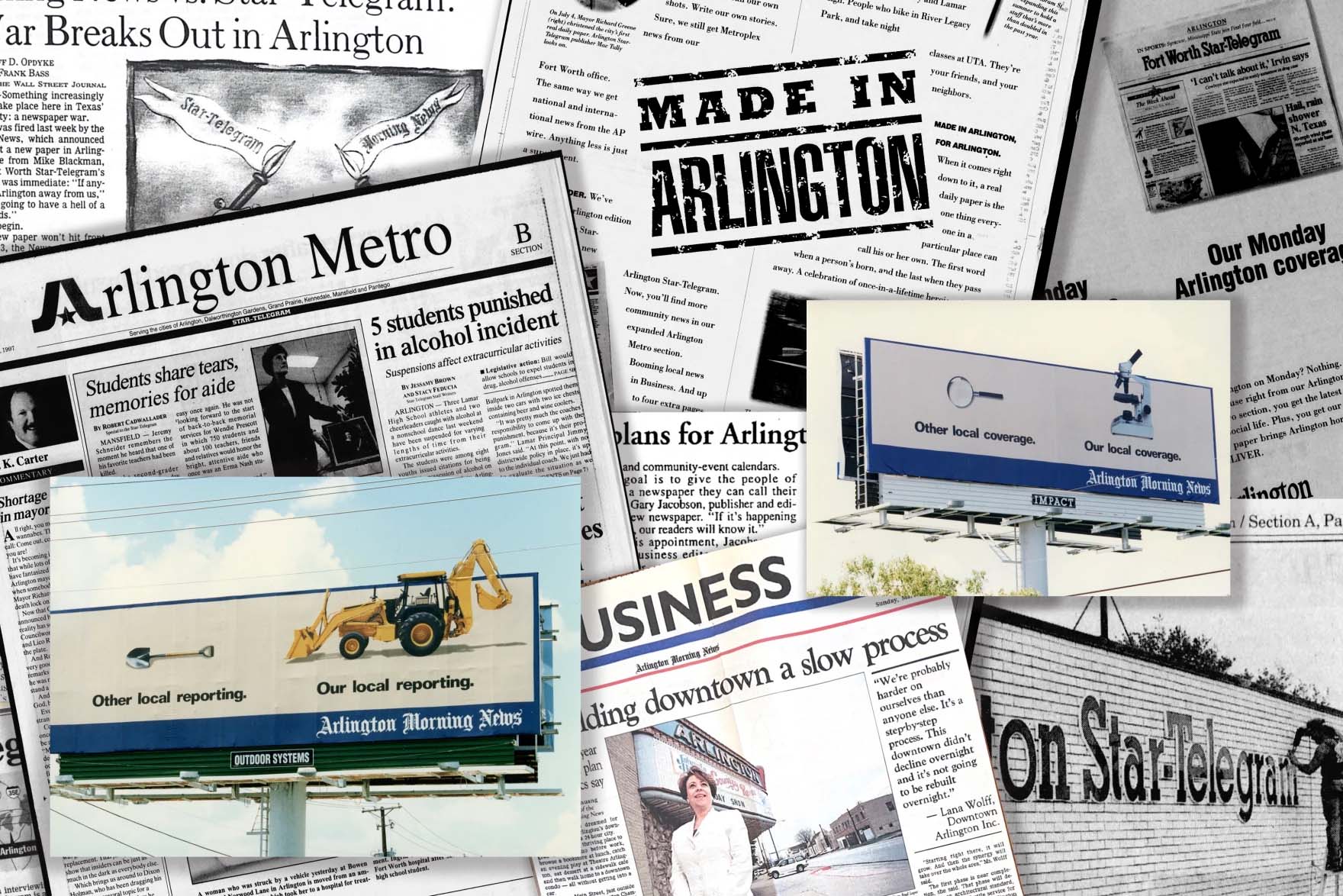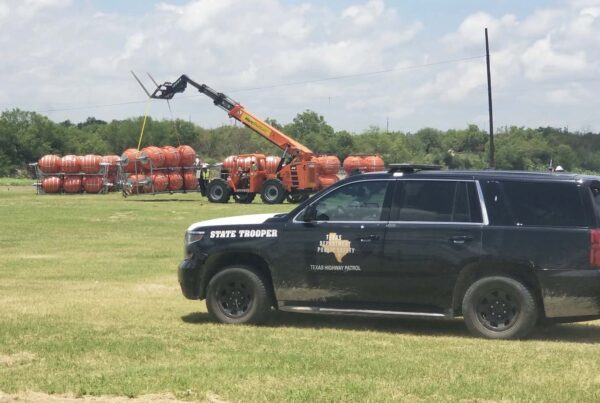From KERA News:
Millions of people visit Arlington each year to catch the Dallas Cowboys at AT&T Stadium, ride roller coasters at Six Flags Over Texas or see a concert in the entertainment district. Yet Arlington residents struggle to find coverage of city council meetings, UT Arlington and Arlington Independent School District.
But that wasn’t always the case. Less than 30 years ago, Arlington had two daily newspapers that fought for scoops, relevancy and the almighty readership base.
The newspaper war between sister publications of the Dallas Morning News and the Fort Worth Star-Telegram lasted less than a decade. However, they covered the city like no other publication had before.
“When you’ve got 200 people, every rock you turn has somebody’s footprint already,” said O.K. Carter, former Arlington Citizen-Journal and Arlington Star-Telegram publisher.
Former Arlington Morning News editor and publisher Gary Jacobson calls it the “last hurrah” of American newspapers. The DMN announced their independent Arlington paper in 1996. The Dallas Times-Herald had closed five years earlier, and the DMN enjoyed its monopoly.
“Others may argue, you know, when every big city had two or three or four competing dailies, that was the heyday. Maybe they were right,” Jacobson said. “But there was a lot of money then. When you’re a monopoly — when you’re a monopoly in Dallas — there was a lot of money in it, and it got spent for good journalism.”
The Star-Telegram, which had an Arlington section and the weekly edition of the Arlington Citizen-Journal, answered with its own version. Former Arlington Star-Telegram editor Gary Hardee said the paper hired 50 reporters in three months’ time to launch its answer to the News’ product.

The Arlington Morning News launched in 1996 and billed itself as “Arlington’s Own Newspaper.” The publication, as well as its rival Arlington Star-Telegram, boasted its own newspaper staffs and editorial boards.
Courtesy Gary Jacobson
“We were committed to doing whatever it takes, whatever it took, because Arlington was a very important area for the Star-Telegram, (and the) Star-Telegram did not feel like it could lose that territory to the Morning News,” Hardee recalled.
For several years, the community that previously did not have a daily paper suddenly had two. And local leaders, who always felt the city was overlooked for its neighbors in Dallas and Fort Worth, felt like Arlington got the coverage it deserved.
Richard Greene was Arlington mayor from 1987 to 1997 and became associate publisher of the Arlington Star-Telegram. He continued to write for the Star-Telegram and is CEO of Arlington Today Magazine.
“I think the reaction in the community was it was good news that Arlington was finally going to get the attention that it should have always been expecting,” Greene said.
The end of a newspaper battle
However, newspaper wars aren’t forever. And the continued decline of newspapers that began in the 2000s has left Arlington, again, without consistent coverage.
The Arlington Morning News became part of its main paper in 2001 before eventually closing in 2003. The Arlington Star-Telegram eventually did the same.
Today, neither newspaper has a dedicated Arlington section or reporters. Both cover the city occasionally, for crime news, sports and topics that come up on reporters’ beats. (Editor’s note: the Star-Telegram hired this reporter from May 2020 until December 2021 to cover Arlington through Report for America.) KERA News is the only news organization that employs a full-time Arlington reporter.
Katrice Hardy, The News’ executive editor, said in an email that although the paper does not have dedicated full-time resources exclusively for the community, the staff continues to cover Arlington.
“The DMN’s goal is to serve the entire region and Arlington as you can see from all the reporters that write about the city as part of their work is an important part of our mission,” Hardy wrote.
The Star-Telegram’s executive editor did not respond to a request for comment.
Tough times in local news
The dwindling of local news has affected communities across the United States, as platforms like Facebook, Craigslist and Google siphoned advertising revenue from legacy media. That has meant years of layoffs, budget cuts and publication closures.
Local news outlets outside of major cities have suffered the deepest cuts.
UT Arlington communication professor Erika Pribanic-Smith said the cost of covering a community — and covering it consistently — are expensive, especially for cities with fewer advertisers.
“I think it’s just more and more newspaper companies are finding it harder and harder to operate on their own,” Pribanic-Smith said.
Local paper ownership declined by 32% between 2004 and 2018, while the number of papers owned by large-scale media companies rose 20%, according to U.S. News Deserts.
“They do wind up selling to these corporations and crossing their fingers that enough coverage will remain. And a lot of times, once those corporations take over, it just doesn’t,” Pribanic-Smith said. “They might have one reporter going out and covering an entire city the size of Arlington, and it’s just simply not enough.”
While Arlington receives occasional coverage from publications in Dallas and Fort Worth, rural counties suffer a worse fate. More than one-tenth of Texas’ 254 counties does not have a daily or weekly local paper, according a 2022 Texas Tribune report.
Studies have linked anemic local news climates with higher government spending, less civic engagement and increased partisanship.
Pribanic-Smith said the phenomenon diminishes journalism’s historic role as the “fourth estate”– in other words, a watchdog for the three branches of government.
“When you don’t have journalists dedicated to telling you about all of the things going on in your community, especially a community the size of Arlington, people don’t know what’s going on. That has a tremendous impact,” Pribanic-Smith said.
Arlington’s media climate
The absence of consistent local media coverage has cleared the way for residents, students and city leaders to fill in the information gap.
The staff of The Shorthorn, UTA’s independent student paper, are among the most frequent reporters at city council meetings. So is Richard Weber, who produces The Arlington Spectator, a Facebook page and newsletter that mixes cutting criticism of local government spending with meeting minutiae. Arlington Urban Media and Entertainment runs popular social media accounts that aggregates breaking news and features local artists.
Arlington Today Magazine bills itself as the “publication of record” for the greater Arlington area. The monthly magazine launched in 2013 with former council member Judy Rupay as publisher and former mayor Richard Greene as CEO. The magazine runs press releases, paid advertising articles and generally positive stories about Arlington.
Rupay wanted a publication that would celebrate Arlington and noticed the decline of newspapers had left the area in the lurch, recalled former editor Yale Youngblood.
“We tried to celebrate advances, victories, whatever, in the community, in the city government, in new restaurants, new businesses. We tried to make sure that our readers realize how vibrant a community Arlington is,” Youngblood said.
The UTA academic communication department launched the Lone Star Sentinel in 2022. The publication is funded by the Scripps Howard Foundation and publishes community journalism from students about Arlington and other North Texas cities.
“It’s not just Arlington,” Pribanic-Smith said. “There’s a lot of communities in this area and especially communities where there’s minorities and other demographics that need the coverage.”
Pribanic-Smith’s students also regularly write stories and posts for the Arlington Museum of Art website. She said government and cultural entities are picking up the slack of highlighting the community, but it’s hard to get information out without people to curate the updates.

The Arlington Museum of Art is a non-collecting art museum located in downtown Arlington.
Emily Nava
That can leave Arlington beholden to Fort Worth and Dallas news cycles.
“When there’s something major like that, you know, you’re having the Dallas media covering it, or, you know, places having to rely on social media,” she said.
Museum spokesperson Amy Schultz sees the same issue–both at her current job and her time working in various positions at UTA. There’s a dearth of stories about Arlington other than sports news, despite Arlington’s arts institutions, Schultz said.
“I don’t get the sense, as I look at traditional media coverage, that that really is apparent as maybe some coverage from some of the kind of larger institutions that are equally wonderful in Dallas and equally wonderful in Fort Worth, but have kind of a different backstory,” Schultz said.
Schultz co-published a blog, Sociability, which published community stories in first-person storytelling format during its 18-month existence. She and her collaborator, Tony Rutigliano, founded the publication at the height of the coronavirus pandemic, as communities felt the effects of isolation.
“People weren’t sitting around together in coffee shops sharing each other’s stories,” Schultz said. “I mean, that’s kind of the fundamentals of community building, is getting people in the same room and having them share their stories and being heard.”
Arlington-specific issues
Calling Arlington the “S” word is tantamount to fighting words among city leaders — so much so that former Mayor Richard Greene all but coined the city as “Nobody’s damn suburb.”
With just under 400,000 residents, Arlington is the seventh largest city in Texas, and makes regular appearances on lists of Top 50 most populous U.S. cities. Its ranking rivals, New Orleans and Wichita, Kan., both have dailies.
However, its location puts it in the shadows of Fort Worth to its left and Dallas to its right. The same applies when it comes time to advertisements and headlines, Carter said.
“News desert or not, you’re in the middle of two top 20-population cities on both sides of you, and typically your newsrooms and your managers … are much more focused on Dallas or much more focused on Fort Worth than they are on the suburban elements,” Carter said.
Pinning down Arlington’s population and community can also be challenging. Census data shows that over 60% of working residents commute outside Arlington for their jobs. Arlington attracted 14.5 million visitors in 2017, according to an Arlington Convention and Visitors Bureau report.
Arlington’s central location means people have weaker attachments to it, Gary Hardee said. He isn’t sure how much the paper could have helped people feel attached to their community.
“You know, it does not have the employment centers that either Fort Worth or especially Dallas have. And so in many ways, a lot of people identified with those larger cities and city officials were always battling to create this stronger Arlington identity,” he said.
Faye Reeder, former community relations director for the Arlington Star-Telegram, said she worries about the implications of not having a go-to news source for the city, its residents and the future of civic groups.
“It’s hard to engage with your community and help it to mature and grow and evolve into the kind of place where everybody wants to live and work when you don’t have enough information about what’s going on,” she said.














